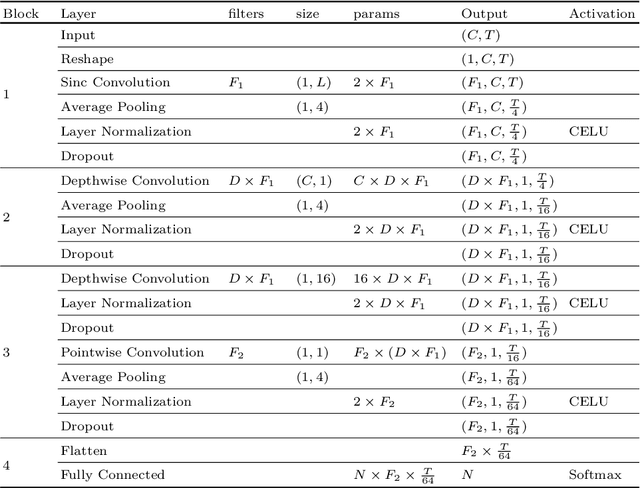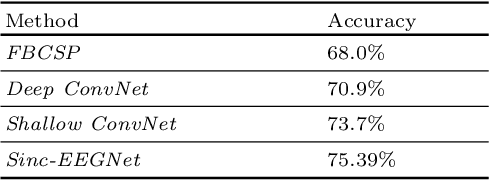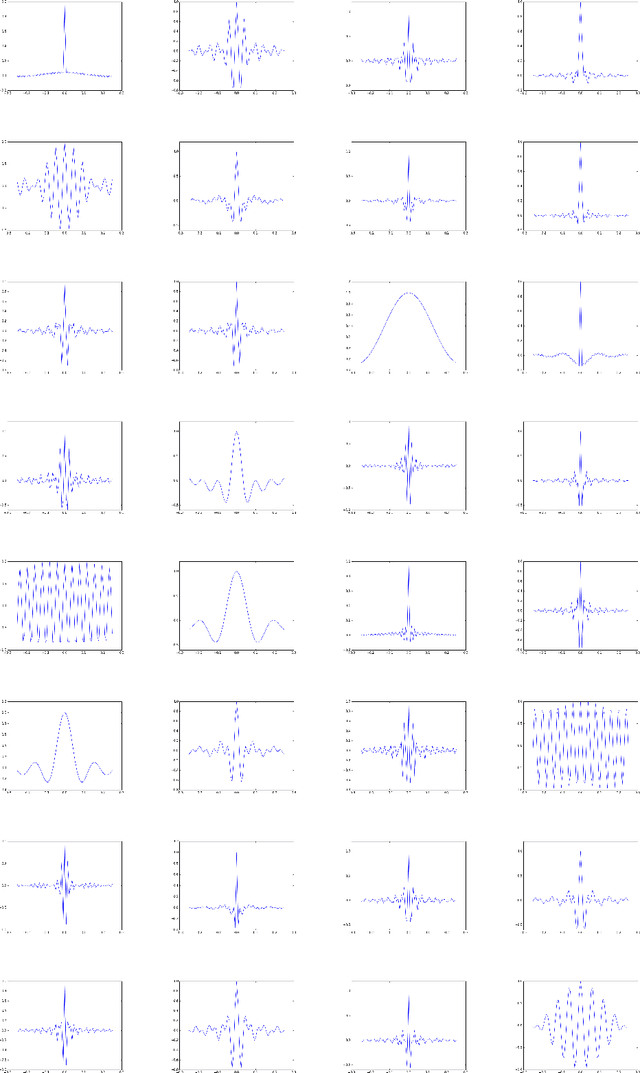Francesco Tortorella
Sinc-based convolutional neural networks for EEG-BCI-based motor imagery classification
Jan 19, 2021



Abstract:Brain-Computer Interfaces (BCI) based on motor imagery translate mental motor images recognized from the electroencephalogram (EEG) to control commands. EEG patterns of different imagination tasks, e.g. hand and foot movements, are effectively classified with machine learning techniques using band power features. Recently, also Convolutional Neural Networks (CNNs) that learn both effective features and classifiers simultaneously from raw EEG data have been applied. However, CNNs have two major drawbacks: (i) they have a very large number of parameters, which thus requires a very large number of training examples; and (ii) they are not designed to explicitly learn features in the frequency domain. To overcome these limitations, in this work we introduce Sinc-EEGNet, a lightweight CNN architecture that combines learnable band-pass and depthwise convolutional filters. Experimental results obtained on the publicly available BCI Competition IV Dataset 2a show that our approach outperforms reference methods in terms of classification accuracy.
 Add to Chrome
Add to Chrome Add to Firefox
Add to Firefox Add to Edge
Add to Edge